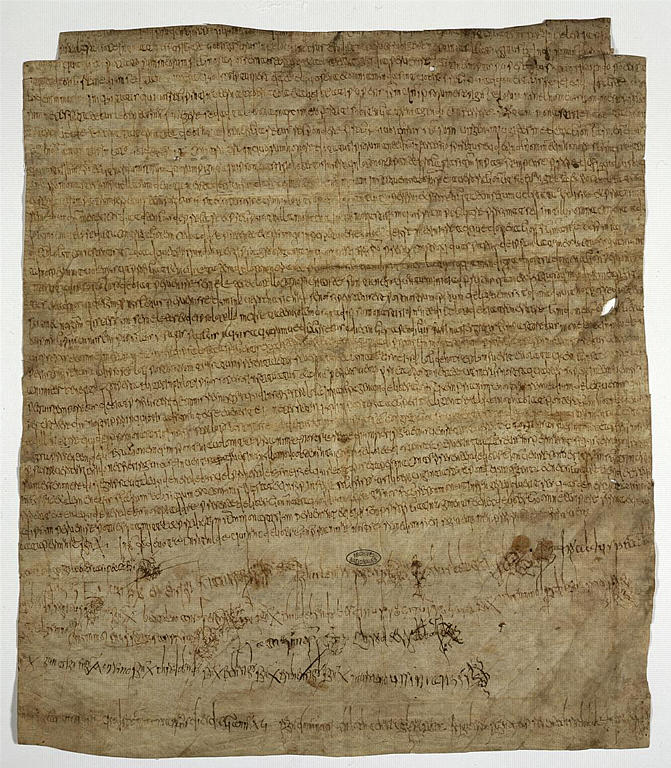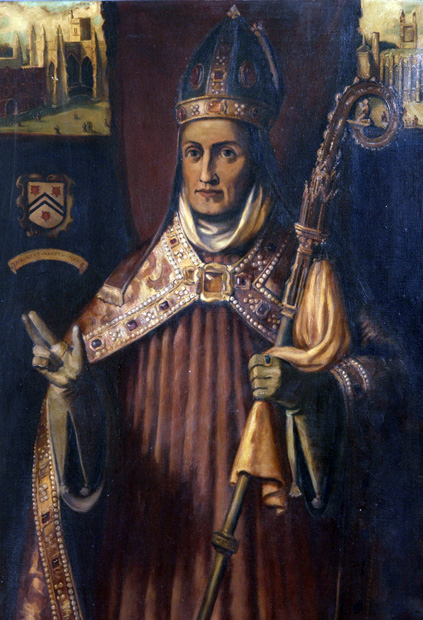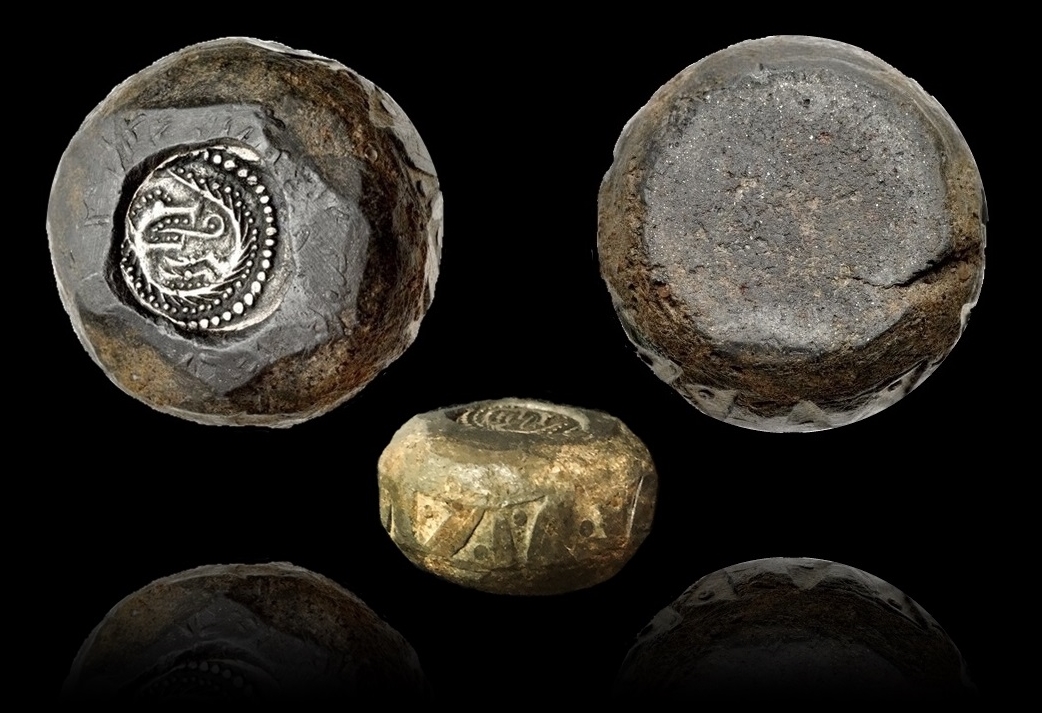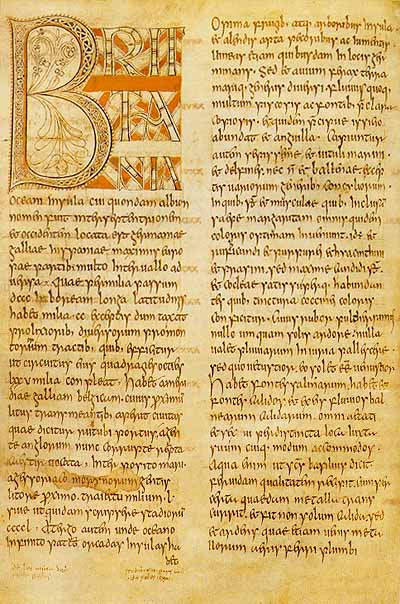|
Agilbert
Agilbert ( 650–680) was the second bishop of the West Saxon kingdom and later Bishop of Paris. He is venerated as a saint within the Catholic Church, with his feast day falling on 11 October. The date and place of Agilbert's birth are unknown, but evidence suggests it took place between 610 and 620.Hunter, 1985. Son of a Neustrian noble named Betto, he was a first cousin of Audoin and related to the Faronids and Agilolfings, and less certainly to the Merovingians. His name, the Frankish language equivalent of Æthelberht, has been taken to suggest a link with the royal family of the Kingdom of Kent. Agilbert was consecrated as a bishop in Francia before he travelled to Britain. He arrived in the West Saxon kingdom after the return to power of King Cenwalh of Wessex, who had been driven out by Penda of Mercia, either in the late 640s or 650s. He was appointed to succeed Birinus (also later canonised, and attributed with conversion of Wessex to Christianity) as bishop of the ... [...More Info...] [...Related Items...] OR: [Wikipedia] [Google] [Baidu] |
Jouarre Abbey
Jouarre Abbey (''Abbaye Notre-Dame de Jouarre'') is a Order of St. Benedict, Benedictine abbey in Jouarre in the departments of France, département of Seine-et-Marne. History This Merovingian foundation was established around 630, by , son of Saint Authaire (Audecharius), inspired by a visit of St. Columbanus. His first cousin, Thelchildes, who had been educated at the abbey of Faremoutiers Abbey, Faremoutiers, became Abbess. As part of its Celtic heritage, Jouarre was established as a "double monastery, double community," i.e., a community of monks as well as nuns, both under the rule of the abbess, following a mixed rule. Charlemagne later imposed the ''Rule of Saint Benedict''. The Merovingian (pre-Romanesque) crypt beneath the Romanesque architecture, Romanesque abbey church contains a number of burials in sarcophagus, sarcophagi, notably that of Theodochilde's brother, Agilbert (died 680), carved with a tableau of the Last Judgment and Christ in Majesty, highlights of ... [...More Info...] [...Related Items...] OR: [Wikipedia] [Google] [Baidu] |
Bishop Of Paris
The Archdiocese of Paris (; ) is a Latin Church ecclesiastical jurisdiction or archdiocese of the Catholic Church in France. It is one of twenty-three archdioceses in France. The original diocese is traditionally thought to have been created in the 3rd century by St. Denis and corresponded with the Civitas Parisiorum; it was elevated to an archdiocese on October 20, 1622. Before that date the bishops were suffragan to the archbishops of Sens. History Paris was a Christian centre at an early date, its first apostles being St. Denis and his companions, Sts. Rusticus and Eleutherius. Until the Revolution the ancient tradition of the Parisian Church commemorated the seven stations of St. Denis, the stages of his apostolate and martyrdom: * (1) the ancient monastery of Notre-Dame-des-Champs of which the crypt, it was said, had been dedicated to the Blessed Virgin by St. Denis on his arrival in Paris; * (2) the Church of St-Etienne-des-Grès (now disappeared), which stood on ... [...More Info...] [...Related Items...] OR: [Wikipedia] [Google] [Baidu] |
Birinus
Birinus (also ''Berin'', ''Birin''; – 3 December 649 or 650) was the first Bishop of Dorchester and was known as the "Apostle to the West Saxons" for his conversion of the Kingdom of Wessex to Christianity. He is venerated as a saint by the Roman Catholic Church, the Eastern Orthodox Church, and Anglican churches. Life and ministry After Augustine of Canterbury performed the initial conversions in England, Birinus, a Frank, came to the kingdom of Wessex in 634, landing at the port of '' Hamwic'', now in the St Mary's area of Southampton. During Birinus's brief time at Hamwic, St Mary's Church was founded. A Benedictine monk, Birinus had been made bishop by Asterius in Genoa, and Pope Honorius I created the commission to convert the West Saxons. In 635, he persuaded the West Saxon king Cynegils to allow him to preach. Cynegils was trying to create an alliance with Oswald of Northumbria, with whom he intended to fight the Mercians. At the final talks between kin ... [...More Info...] [...Related Items...] OR: [Wikipedia] [Google] [Baidu] |
Bishop Of Winchester
The Bishop of Winchester is the diocesan bishop of the Diocese of Winchester in the Church of England. The bishop's seat (''cathedra'') is at Winchester Cathedral in Hampshire. The Bishop of Winchester has always held ''ex officio'' the office of Prelate of the Order of the Garter, Most Noble Order of the Garter since its foundation in 1348. except during the period of the Commonwealth of England, Commonwealth until the Stuart Restoration, Restoration of the Monarchy. Bishops of Winchester also often held the positions of Lord Treasurer and Lord Chancellor ''ex officio''. During the Middle Ages, the Diocese of Winchester was one of the wealthiest English sees, and its bishops have included a number of politically prominent Englishmen, notably the 9th century Saint Swithun and medieval magnates including William of Wykeham and Henry of Blois. The Bishop of Winchester is appointed by the Crown, and is one of five Church of England bishops who sit ''ex officio'' among the 26 Lo ... [...More Info...] [...Related Items...] OR: [Wikipedia] [Google] [Baidu] |
Wine (bishop)
__NOTOC__ Wine (died before 672) was a medieval Bishop of London, having earlier been consecrated the first Bishop of Winchester. Wine was Consecration, consecrated the first bishop of Winchester in 660 and possibly translated to Bishop of Winchester, Dorchester around 663.Fryde, et al. ''Handbook of British Chronology'' p. 223 In 666, he was translated from Dorchester to London.Fryde, et al. ''Handbook of British Chronology'' p. 239 Bede tells us that Wine was ordained bishop in the Frankish kingdomBede ''Ecclesiastical History of the English people'' Book 3, Chapter 7 and that King Cenwalh of Wessex installed him after disagreements with the previous Frankish bishop, Agilbert. Wine too was forced to leave after a few years and took refuge with Wulfhere, king of Mercia, who installed him in London,Kirby ''Earliest English Kings'' p. 49 after a payment to Wulfhere.Kirby ''Earliest English Kings'' p. 95 In 665, while in Wessex, Wine took part with two Welsh or British bishops ... [...More Info...] [...Related Items...] OR: [Wikipedia] [Google] [Baidu] |
Audoin (bishop)
Audoin (; AD 609 – on 24 August 684), venerated as Saint Audoin, was a Frankish bishop, courtier, hagiographer and saint. He authored ''Vita Sancti Eligii'' which outlines the life and deeds of Eligius, his close friend and companion in the royal court and the Church. Life Audoin came from a wealthy aristocratic Frankish family who held lands in the upper Seine and Oise valleys. His father was Authaire (Audecharius). Audoin was a first cousin of Agilbert, bishop of the West Saxons. He spent his childhood at Ussy-sur-Marne, and was then sent to be educated at the Abbey of Saint-Médard de Soissons. From there he went to the court of Chlothar II (d.629), where training both military and literary was given to young noblemen, he served Dagobert I as one of his referendaries (administrators). [...More Info...] [...Related Items...] OR: [Wikipedia] [Google] [Baidu] |
Cenwalh Of Wessex
Cenwalh, also Cenwealh or Coenwalh, was King of Wessex from c. 642 to c. 645 and from c. 648 until his death, according to the ''Anglo-Saxon Chronicle'', in c. 672. Penda and Anna Bede states that Cenwalh was the son of the King Cynegils baptised by Bishop Birinus. He was also the great-great-grandson of Cerdic.Bede, ''Ecclesiastical History of the English People'', Book III, chapter 7. The ''Anglo-Saxon Chronicle'' offers several ancestries for Cynegils, and the relationship of Cynegils and Cenwalh to later kings isn't certain. It has been noted that the name Cenwalh is of British rather than Anglo-Saxon etymology. Although Cynegils is said to have been a convert to Christianity, Bede writes that Cenwalh:refused to embrace the mysteries of the faith, and of the heavenly kingdom; and not long after also he lost the dominion of his earthly kingdom; for he put away the sister of Penda, king of the Mercians, whom he had married, and took another wife; whereupon a war ensuing, ... [...More Info...] [...Related Items...] OR: [Wikipedia] [Google] [Baidu] |
Ouen
Audoin (; AD 609 – on 24 August 684), venerated as Saint Audoin, was a Frankish bishop, courtier, hagiographer and saint. He authored ''Vita Sancti Eligii'' which outlines the life and deeds of Eligius, his close friend and companion in the royal court and the Church. Life Audoin came from a wealthy aristocratic Frankish family who held lands in the upper Seine and Oise valleys. His father was Authaire (Audecharius). Audoin was a first cousin of Agilbert, bishop of the West Saxons. He spent his childhood at Ussy-sur-Marne, and was then sent to be educated at the Abbey of Saint-Médard de Soissons. From there he went to the court of Chlothar II (d.629), where training both military and literary was given to young noblemen, he served Dagobert I as one of his referendaries (administrators). [...More Info...] [...Related Items...] OR: [Wikipedia] [Google] [Baidu] |
Kingdom Of The West Saxons
The Kingdom of the West Saxons, also known as the Kingdom of Wessex, was an Anglo-Saxon kingdom in the south of Great Britain, from around 519 until Alfred the Great declared himself as King of the Anglo-Saxons in 886. The Anglo-Saxons believed that Wessex was founded by Cerdic and Cynric of the Gewisse, though this is considered by some to be a legend. The two main sources for the history of Wessex are the West Saxon Genealogical Regnal List and the ''Anglo-Saxon Chronicle'' (the latter of which drew on and adapted an early version of the List), which sometimes conflict. Wessex became a Christian kingdom after Cenwalh () was baptised and was expanded under his rule. Cædwalla later conquered Sussex, Kent and the Isle of Wight. His successor, Ine (), issued one of the oldest surviving English law codes and established a second West Saxon bishopric. The throne subsequently passed to a series of kings with unknown genealogies. During the 8th century, as the hegemony o ... [...More Info...] [...Related Items...] OR: [Wikipedia] [Google] [Baidu] |
Francia
The Kingdom of the Franks (), also known as the Frankish Kingdom, or just Francia, was the largest History of the Roman Empire, post-Roman barbarian kingdom in Western Europe. It was ruled by the Franks, Frankish Merovingian dynasty, Merovingian and Carolingian dynasty, Carolingian dynasties during the Early Middle Ages. Francia was among the last surviving Germanic kingdoms from the Migration Period era. Originally, the core Frankish territories inside the former Western Roman Empire were located close to the Rhine and Meuse rivers in the north, but Frankish chiefs such as Chlodio would eventually expand their influence within Roman territory as far as the Somme (river), Somme river in the 5th century. Childeric I, a Salian Franks, Salian Frankish king, was one of several military leaders commanding Roman forces of various ethnic affiliations in the northern part of what is now France. His son, Clovis I, succeeded in unifying most of Gaul under his rule in the 6th century by ... [...More Info...] [...Related Items...] OR: [Wikipedia] [Google] [Baidu] |
Historia Ecclesiastica Gentis Anglorum
The ''Ecclesiastical History of the English People'' (), written by Bede in about AD 731, is a history of the Christian Churches in England, and of England generally; its main focus is on the growth of Christianity. It was composed in Latin, and is believed to have been completed in 731 when Bede was approximately 59 years old. It is considered one of the most important original references on Anglo-Saxon history, and according to some scholars has played a key role in the development of an English national identity. Overview The , or ''An Ecclesiastical History of the English People'', is Bede's best-known work, completed in about 731. The first of the five books begins with some geographical background and then sketches the history of England, beginning with Julius Caesar's invasion in 55 BC. A brief account of Christianity in Roman Britain, including the martyrdom of St Alban, is followed by the story of Augustine of Canterbury, Augustine's mission to England in 597, which brou ... [...More Info...] [...Related Items...] OR: [Wikipedia] [Google] [Baidu] |
Bede
Bede (; ; 672/326 May 735), also known as Saint Bede, Bede of Jarrow, the Venerable Bede, and Bede the Venerable (), was an English monk, author and scholar. He was one of the most known writers during the Early Middle Ages, and his most famous work, '' Ecclesiastical History of the English People'', gained him the title "The Father of English History". He served at the monastery of St Peter and its companion monastery of St Paul in the Kingdom of Northumbria of the Angles. Born on lands belonging to the twin monastery of Monkwearmouth–Jarrow in present-day Tyne and Wear, England, Bede was sent to Monkwearmouth at the age of seven and later joined Abbot Ceolfrith at Jarrow. Both of them survived a plague that struck in 686 and killed the majority of the population there. While Bede spent most of his life in the monastery, he travelled to several abbeys and monasteries across the British Isles, even visiting the archbishop of York and King Ceolwulf of Northumbria. ... [...More Info...] [...Related Items...] OR: [Wikipedia] [Google] [Baidu] |






